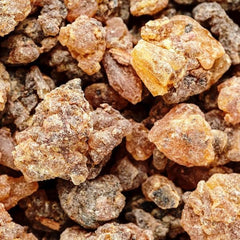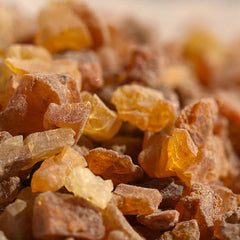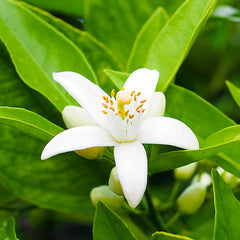What is the Difference Between Oud and Agarwood?
Click For Affordable Inspired Perfume Alternatives
Oud and agarwood are terms that are often used interchangeably in the world of luxury fragrances, incense, and traditional medicine. Despite their frequent association, these words refer to the same precious resinous wood, but the nuances in their terminology, origin, and usage often lead to confusion. Understanding the differences and similarities between oud and agarwood can enhance your appreciation of this exotic material, whether you’re a connoisseur, a perfumer, or simply curious about its cultural significance. In this article, we will explore what makes oud and agarwood unique, how they are related, and what distinguishes them in various contexts.
What is the Difference Between Oud and Agarwood?
Understanding Agarwood: The Origin of Oud
Agarwood, scientifically known as Aquilaria and related species, is a rare and highly valued type of wood that forms as a response to infection or injury in certain trees. When the tree is infected by a specific mold or fungus, it produces a dark, resinous substance within its heartwood as a defense mechanism. Over time, this resinous substance hardens, creating the dense, aromatic wood known as agarwood.
Agarwood is prized for its rich, complex aroma that is warm, woody, sweet, and sometimes slightly fruity or balsamic. It is used extensively in traditional incense, perfumes, and in some cultures, for medicinal purposes. The quality and value of agarwood depend on various factors, including the tree species, age, the extent of resin formation, and the method of harvesting and processing.
Oud: The Cultural and Commercial Name
The term oud is derived from the Arabic word al-oud, which means "wood." Over centuries, oud has become a prominent term in Middle Eastern, Indian, and Southeast Asian cultures to describe both the aromatic resin and the fragrance derived from it. Today, oud is synonymous with luxury and exclusivity in perfumery and is used extensively in high-end fragrances.
While "oud" and "agarwood" refer to the same raw material, "oud" often connotes a refined, aromatic extract or perfume ingredient, as well as the cultural significance attached to the term in perfumery and traditional practices. It is also used to describe the scent profile of products that contain this resinous wood or its extracts.
The Relationship Between Oud and Agarwood
Essentially, oud is the aromatic resin that forms inside certain agarwood trees. When processed, this resin can be distilled or extracted to produce various forms of oud, including:
- Oud oil (essential oil)
- Oud chips or pieces
- Oud extract or concentrate
- Oud-infused perfumes and scents
In summary, agarwood is the raw, natural wood that contains the resin, and oud is the aromatic product derived from that resin. The distinction often lies in language, usage, and the form in which the material is presented.
Differences in Terminology and Cultural Context
- Language origin: "Agarwood" is the English term describing the resinous wood, while "oud" originates from Arabic, Persian, and South Asian languages.
- Usage: "Agarwood" is often used in scientific or botanical contexts, whereas "oud" is more common in perfumery, luxury branding, and cultural references.
- Perception and Value: The word "oud" is often associated with exclusivity, high-end fragrances, and cultural prestige, while "agarwood" is more neutral and descriptive.
- Form of product: Agarwood refers to the raw wood, whereas oud may refer to the extracted oil, resin, or scent profile.
Processing Methods and Quality Considerations
The quality and scent of oud or agarwood depend significantly on how the material is processed. Different methods include:
- Steam distillation: Produces pure oud oil, capturing the aromatic essence of the resin.
- Hydrodistillation: Similar to steam distillation but uses water as a medium.
- Resin extraction: Physical extraction of the resin from the wood, often used for making incense or raw material for perfumes.
- Blending and aging: Aging the extracted oil or resin enhances the complexity and depth of aroma, increasing value.
High-quality oud is typically aged, pure, and derived from trees infected over many years, resulting in a rich, complex scent profile. Lower-quality agarwood may contain less resin or be artificially infused, affecting both scent and value.
Common Uses of Oud and Agarwood
Both terms are associated with a variety of applications:
- Perfumery: Oud is a key ingredient in luxury perfumes and colognes, imparting a deep, woody fragrance.
- Incense: Agarwood chips or powder are burned as incense in religious and cultural ceremonies.
- Traditional medicine: In some cultures, agarwood is used in herbal medicine to promote relaxation and spiritual well-being.
- Home fragrance: Oud oils are used in diffusers and scented candles to create an exotic ambiance.
Environmental and Ethical Considerations
Due to overharvesting and deforestation, genuine agarwood is now rare and expensive. Responsible sourcing is crucial to prevent environmental damage and support sustainable practices. Many products now use synthetic or artificially induced agarwood to meet market demand, but purists often prefer natural, sustainably harvested oud or agarwood.
In Conclusion
The difference between oud and agarwood essentially lies in terminology and context. Agarwood is the raw, resinous wood produced by specific trees under certain conditions, while oud is the term used to describe the aromatic resin, oil, or scent derived from that wood. Both are highly valued across cultures for their complex, warm, and woody aroma, making them a cornerstone of luxury perfumery and traditional practices.
Understanding this distinction enriches your appreciation of the cultural significance, processing methods, and varying qualities of this precious material. Whether you encounter the term "agarwood" in scientific or commercial contexts or "oud" in perfumery and cultural traditions, recognizing their relationship helps you appreciate the depth and luxury associated with this exotic treasure.
Buy Perfumes - Best Online Retailers
Click For Affordable Inspired Perfume Alternatives
Click For The Best Niche Perfumes & Decants
Pheromone Perfumes - Confidence, Attraction & Appeal - Click For More
Home Fragrances & Candle Warmers - Click To Scent Up Your Spaces Today!



